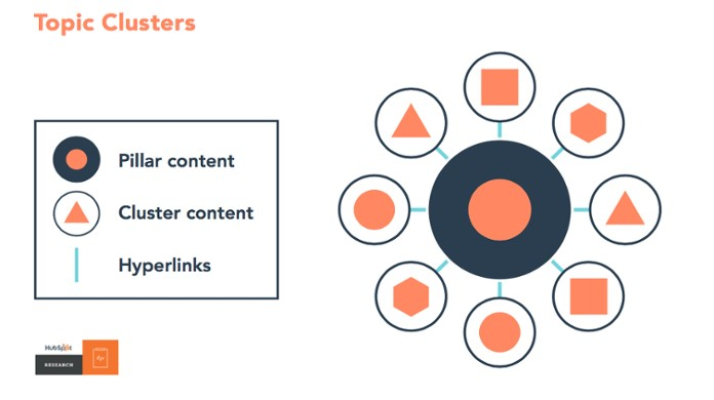4 SEO tips we should leave in 2018
As the New Year is often associated with new beginnings, there is no reason you shouldn’t use this time of the year for revisioning and updating your SEO strategy with some new tactics. But, also, leaving the strategies that don’t work anymore in 2018.
In this article, we will go through a list of 4 most common tips you can still find online, that really have no place in your 2019 SEO strategy. Let’s dive in and see what those outdated tips are.
Outdated SEO tip #1: Implement targeted keywords everywhere on your site
Sure, keywords are still important. If nothing else, you need them in the page title to let people know what they can expect if they click on your website’s link in SERP. But, you really shouldn’t be obsessed with cramming the desired keyword everywhere you can think of.
If you are in the SEO business, or just wanted to learn about SEO for the sake of your business, chances are you came across articles that advise that you MUST put the keyword you want to rank for, in the title tag, meta description, H1, H2, H3, 2-4% in the content, image name, and alt tag, among other places.
This practice hasn’t been producing real results for a long time now, and it really has no place in your 2019 SEO strategy. Google has gotten much smarter from the early days of SEO, and it has no problem with determining what your page is about. As long as it’s written in a way that puts your visitor's intentions and interests first.
Have in mind that Google can devalue your page if you continue with keyword stuffing, considering it introduced the Penguin update which, among other things, targets those pages that are stuffed with keywords.
What to do instead?
Instead of wasting time and energy with creating content around the keywords, create content that is useful to your visitors and customers. Don’t make it difficult to read and understand because your readers will bounce and find a better resource than yours.
Instead of the keywords, you should focus your on-site SEO strategy on the topics you want your site to be recognized for as an expert resource.
This is where the topic cluster strategy can be useful. Topic Cluster is an SEO and content strategy that groups your site’s content around a “pillar page” - a comprehensive resource which broadly covers all of the subtopics that are later interlinked with it.
See the HubSpot's diagram for clarification:

Topic cluster strategy has been popular with SEOs since the shift Google made towards machine-learning with its RankBrain release in late 2015. With this algorithm change, Google has shifted from exact match queries to being able to pull better search results based on synonyms, abstract concepts, and natural language.
To recap: putting exact match keywords in every tag has become a waste of your time. This time when calculated and summed up can be hard to explain to people who hired you for SEO services.
Outdated SEO tip #2: Track all metrics
There are a ton of metrics you can use to measure your site’s SEO performance, and this can often prove a problem. If you are new to SEO, you might not be able to decide which metrics to track or show to your clients. Some of them may look good, but have a small overall influence to the site’s performance, and ultimately, to your business’s performance.
Even if the numbers look good, you need to be cautious when taking these 4 metrics into account, before judging a site’s performance.
Total number of organic keywords
This metric can be very misleading. Many popular SEO tools track this number - the number of keywords your website is ranking for.
The problem here is that they don't take into account:
- the relevance of these keywords,
- the search volume,
- the number of clicks per month.
They also don’t calculate global rankings, but instead calculate rankings for each individual country - they sum up the same keyword for every country.
The number of organic keywords is not a useless metric, but you need to know what you are looking at, before drawing conclusions about your SEO success based on this metric.
Pageviews
A high number of page views is a good thing, right? Well, it depends. The number of page views alone doesn't mean that much. It’s better to know how your visitors are engaging with your site’s content. If you have a high number of views on a particular page, but also a high bounce rate, then that page is probably not offering visitors the answers to their queries and eventually Google will de-rank it.
Time-on-site
Similar to the previous metric, time-on-site is important. But, just like the number of page views, you need more detail, and a comparison with other metrics, to know if you have any benefits from it.
You need to check the flow of the site’s users to understand whether they are engaging with the site. If a person spends a lot of time on your site, that can mean a couple of things. Maybe that person finds your content or products compelling. Or maybe your site is just too confusing for that person to find what he or she is looking for.
Number of backlinks
The one thing that most people in SEO recommend is to get as many backlinks as you can. But, that’s not the whole picture. Your website can have tons of backlinks, but if they are coming from a small number of referring domains, then that’s not so great. It can even be bad for you if those backlinks are spammy and coming from questionable sources.
The main thing to focus on here is to get quality backlinks from good websites. A few lower quality backlinks won't hurt your site and it’s even desirable to diversify your backlink portfolio a bit. But, just remember that the quality, not quantity, is the long-term game here.
Outdated SEO tip #3: Use LSI keywords
Another prominent piece of advice after Google implemented machine learning into its algorithm is the use of LSI keywords in your site’s content.
Latent Semantic Indexing is a mathematical method developed in the late 1980s. It is used to find latent relationships between words to improve the understanding of given information. To put it simply, when you type a “hot dog” query in Google Search, you will first get food-related results, not dog related.
Some SEO experts proposed that, if you sprinkle a few synonyms and related words to your targeted keywords, you will better explain to Google what your page is about.
The problem here is that there is no evidence to support this theory. Latent semantic indexing is something that search engines should have surpassed years ago - its basic stuff for Google. Google is arguably using far more sophisticated machine-learning techniques.
The bottom line is that you should aim for simplicity, and not tire yourself with implementing synonyms into your content left and right. Write your content naturally, Google is advanced enough to know if your page is relevant to user queries.
The page content is only one of the factors that determine a page’s relevance. Many other factors are impacted by users behaviour and engagement, which you should look to enhance.
Also, the use of structured data is very important for labelling your data clearly and helping search engines better index and show users your data and information.
Outdated SEO tip #4: The more internal linking the better
Internal linking is very important for SEO. By linking your pages you help search engines better crawl and understand your website. But, overly optimizing your internal linking structure can often produce the opposite results.
What exactly is over-optimizing when it comes to internal linking? In short, everything that appears unnatural and can be associated with some shady actions. The obvious example of this is the excessive use of exact match keywords in your content.
If you use “digital marketing services” several times in every blog post you write, with a link to yourdomain.com/digital-marketing-services, this can be a red flag to Google. By using keyword-rich anchors too much, you can damage your link profile, which is arguably one of the most important components of your SEO - the obvious exception being your brand name.
Don’t follow antiquated advice for creating the optimum keyword density. You shouldn't be trying to have 2%, 4%, or any percent of your content be the keyword you want to rank for. What you should do instead is use longer anchors and implement them only when it makes sense.
The Topic Cluster that we covered before is one of the techniques that can be used for the internal linking structure.
Conclusion
With so much old advices and misinformation on the internet, it is easy to get confused by what tactics you should and should not implement in your overall SEO strategy. Especially if you are new to the world of SEO. Google’s search algorithm is constantly changing and updating, and it can be difficult finding and balancing all of the information out there.
If you don’t know where to begin, Google’s Webmasters Guidelines and Webmaster Blog are a good place to start.
Related Posts
To make your business successful in the modern age, you need to excel at digital marketing and have a strategy that can allow you to beat out the competition.
In the ever-changing digital marketing landscape, defined by transient attention spans akin to ephemeral specters, the strategic use of video has proven to be an alchemical concoction, flawlessly transmuting mere curiosity into a passionate embrace of customer interaction.
In an online space where brands relentlessly struggle for more website traffic and sales, creating the right SEO strategy boosts your site's visibility by placing it higher on search engine rankings.
SEO, or Search Engine Optimization, began in the mid-1990s. This was shortly after the world's first search engines debuted, prompting webmasters to optimize their sites for visibility and ranking.
Core Web Vitals is a set of performance metrics developed by Google to measure the quality of a website's user experience.
It’s certain the people you look up to the most in your professional life qualify as thought leaders.

















Comments
comments powered by Disqus